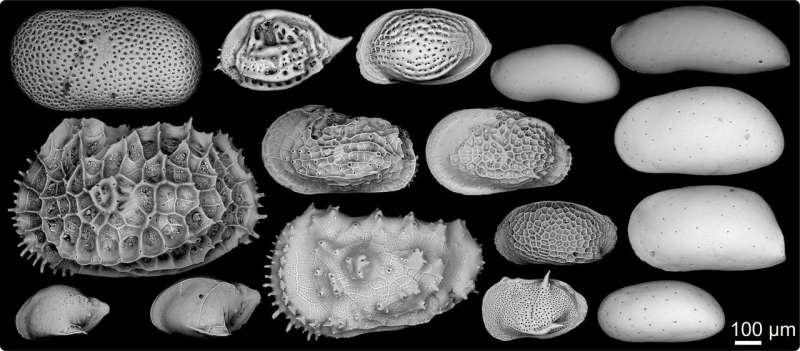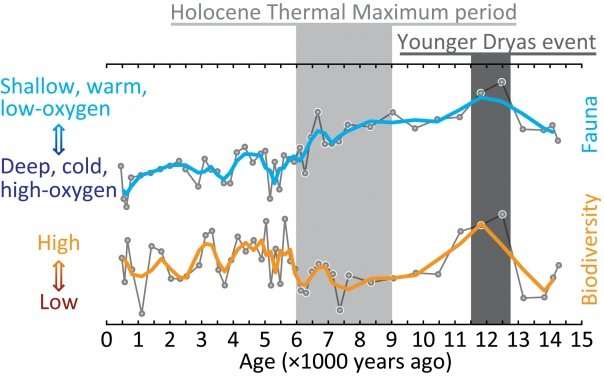Scanning Electron Microscopy image of selected fossil ostracods from the study site Credit: @The University of Hong Kong
Dr. Hokuto Iwatani and Dr. Moriaki Yasuhara from School of Biological Sciences and Swire Institute of Marine Science, The University of Hong Kong), in collaboration with scientists at Rutgers, the State University of New Jersey, and Lamont-Doherty Earth Observatory of Columbia University, have reported their discovery on past deep-water dynamics in the western tropical Pacific in Geology.
The western tropical Pacific has the world's highest sea-surface temperature. A major surface sea current in this region is known as the Indonesian Throughflow, and transfers a significant amount of heat and water from the Pacific to the Indian Ocean. The throughflow plays a vital role in the dynamics of global climate and marine ecosystems. However, the effect of deep-sea water contribution to this region over time remains poorly investigated, and is not well understood. Dr. Iwatani, Dr. Yasuhara and their collaborators revealed that deep-sea fauna and biodiversity in this region rapidly changed during a rapid climate change event known as the Younger Dryas about 12,000 years ago due to the weakened Indonesian Throughflow. They also found a significant environmental overturn at around 7,000 years ago, probably due to the mixing of different deep-sea waters from both hemispheres. These are important findings for better understanding the tropical climate in our rapidly changing world.
The research group used fossil Ostracoda preserved in a sediment core as a model organism to reconstruct the ecosystem, biodiversity, and marine environment of the Earth in the past, as this small (usually <1 mm) aquatic crustacean is very sensitive to water conditions. All ostracode shells in the samples were picked and identified under the microscope, and then the faunal assemblage and species diversity were computed. More than 7,000 shells and about 150 species were recorded in a sediment core from the Makassar Strait in the eastern Java Sea, western tropical Pacific in this study.
"The western tropical Pacific is a unique sea, where surface sea currents outflow to the northern and southern hemispheres, and deep-sea waters inflow from both high latitude regions, so this region could be seen as a kind of heart pump in the modern ocean. However, the deep sea in this area and its past dynamics remain poorly understood, despite their importance in Earth's climate system," said Dr. Iwatani. This study added new paleontological and paleoceanographic insights to this complex and enigmatic ocean history.
Deep-sea ostracod faunal component and diversity changes in the western tropical Pacific for the last 15,000 years. Fossil records show rapid faunal and diversity changes during the significant global climate change events of Younger Dryas and Holocene Thermal Maximum periods (highlighted by gray bands). Higher biodiversity means that there are more species in a sample. Credit: The University of Hong Kong
More information: Hokuto Iwatani et al, Intermediate-water dynamics and ocean ventilation effects on the Indonesian Throughflow during the past 15,000 years: Ostracod evidence, Geology (2018). DOI: 10.1130/G40177.1
Journal information: Geology
Provided by The University of Hong Kong

























